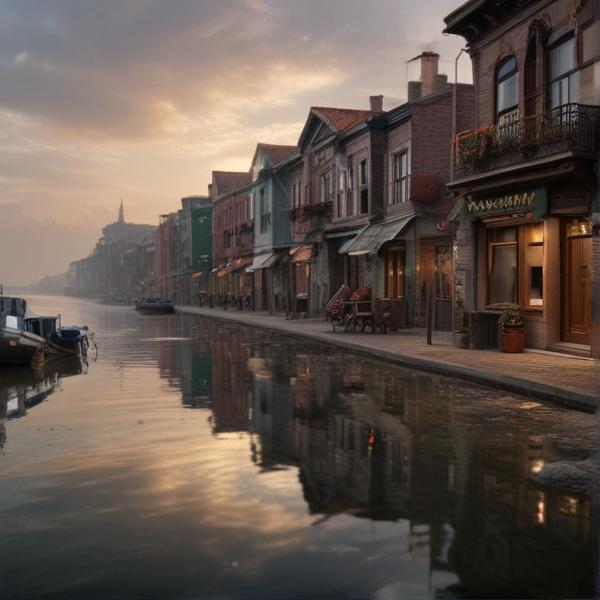基本信息 (Basic Information)
含义与用法 (Meanings & Usage)
中文核心释义 (Core Chinese Meaning): 风景,景色;情景,情况。
英文核心释义 (Core English Meaning): scenery, view, scene; situation.
“景”常用于表示自然风光,如“美景”、“景色”。也可引申为情景、情况,如“景象”。在现代,常见于组合词中,很少单独使用。
"景" is commonly used to refer to natural scenery, as in '美景' (beautiful view) or '景色' (scenery). It can also mean a situation or scene, for example '景象' (spectacle, scene). In modern Chinese, it is mostly found in compound words and rarely used alone.
象形意义 / 为何这么写 (Pictographic Meaning / Writing Rationale)
“景”字为会意字,上为“日”(表示太阳),下为“京”(意为高大建筑),结合表示太阳照耀下的高处,引申为风景、情景。'景' is a compound ideogram: the top part '日' means 'sun', and the bottom part '京' refers to a tall building. Together, they depict a high place illuminated by the sun, which is extended in meaning to 'scenery' or 'scene'.
文言文释义 (Classical Chinese Meaning)
古代“景”常指阳光、影子或明亮,引申至风景、情形,与现代意义基本相近。In ancient Chinese, '景' often referred to sunlight, shadows, or brightness, and was later extended to scenery or situations—similar to the modern meanings.
深入学习 (In-depth Study)
字源故事 (Origin Story)
“景”字最早出现于甲骨文,结构上由“日”(太阳)和“京”组成,表示阳光照耀下的高台,引申为明亮和风景。后来含义逐渐扩展为风景、情景等。The character '景' first appeared in oracle bone script. Structurally, it is composed of '日' (sun) and '京', symbolizing a tall platform illuminated by sunlight. It originally signified brightness or a scene under the sun, and over time its meaning broadened to include landscape and situation.
字形演变 (Character Evolution)
甲骨文 (Oracle Bone Script):
甲骨文中“景”字上方为“日”形,下方为“京”的象形,整体描绘太阳照射高台的场景。
In Oracle Bone Script, '景' shows '日' (sun) on top and a pictographic representation of '京' (a tall structure) below, overall depicting sunlight shining on a high platform.
金文 (Bronze Inscription):
金文中“景”形体更接近“日”在上、“京”在下,线条变得圆润流畅,但结构与甲骨文相似。
'景' in Bronze Inscription retains '日' above and '京' below, with more rounded and flowing lines, but the structure is similar to that in oracle bone script.
小篆 (Small Seal Script):
小篆时期,“景”字结构分明,线条更加统一,日、京的结构清晰可见。
In Small Seal Script, '景' has a clear structure, with more unified lines. The components '日' and '京' are easily recognizable.
隶书 (Clerical Script):
隶书中“景”字扁平化,笔画变粗,结构简洁,便于书写。
In Clerical Script, '景' becomes flatter, the strokes are thicker, and the structure is simplified for easier writing.
楷书 (现代) (Regular Script (Modern)):
现代楷书中“景”上为“日”,下为“京”,结构规整,广泛应用于书写和印刷。
In modern Regular Script, '景' displays '日' at the top and '京' at the bottom, with a standard, neat structure, widely used in handwriting and printing.
常用词语和例句 (Common Words & Examples)
风景 (scenery, landscape)
这里的风景非常美丽。
Eng: The scenery here is very beautiful.
景色 (scene, view, landscape)
山上的景色令人难忘。
Eng: The view from the mountain is unforgettable.
情景 (scene, situation, circumstances)
这幅画描绘了温馨的家庭情景。
Eng: This painting depicts a warm family scene.
相关成语 (Related Idioms)
如画美景
Meaning: a scene as beautiful as a painting
“如画美景”用来形容像画一样优美的风景。古人游览名胜时常用此语表达赞美之情。
'如画美景' describes scenery as beautiful as a painting. In ancient times, people often used this phrase to praise the stunning landscapes they visited.
多语言翻译 (核心释义) (Translations (Core Meaning))
- French: paysage, vue
- German: Landschaft, Szenerie
- Spanish: paisaje, escena
- Italian: paesaggio, scena
- Portuguese: paisagem, cenário
- Russian: пейзаж, вид
- Arabic: منظر، مشهد
- Persian: منظره، چشمانداز
- Dutch: landschap, uitzicht
- Polish: krajobraz, widok
- Vietnamese: phong cảnh, cảnh vật
- Ukrainian: пейзаж, краєвид
视频学习资源 (Video Learning Resources)
通过以下链接在热门视频网站搜索 "景" 的更多讲解:
Search for more explanations of "景" on popular video sites:
- 在 Bilibili.com 搜索 "景 字源 说文解字" (Search on Bilibili)
- 在 YouTube.com 搜索 "景 character origin etymology" (Search on YouTube)
网络参考 (Web References for "景") ()
网络搜索信息待获取。Web search information pending.
更多图片 (景 More Images) ()
